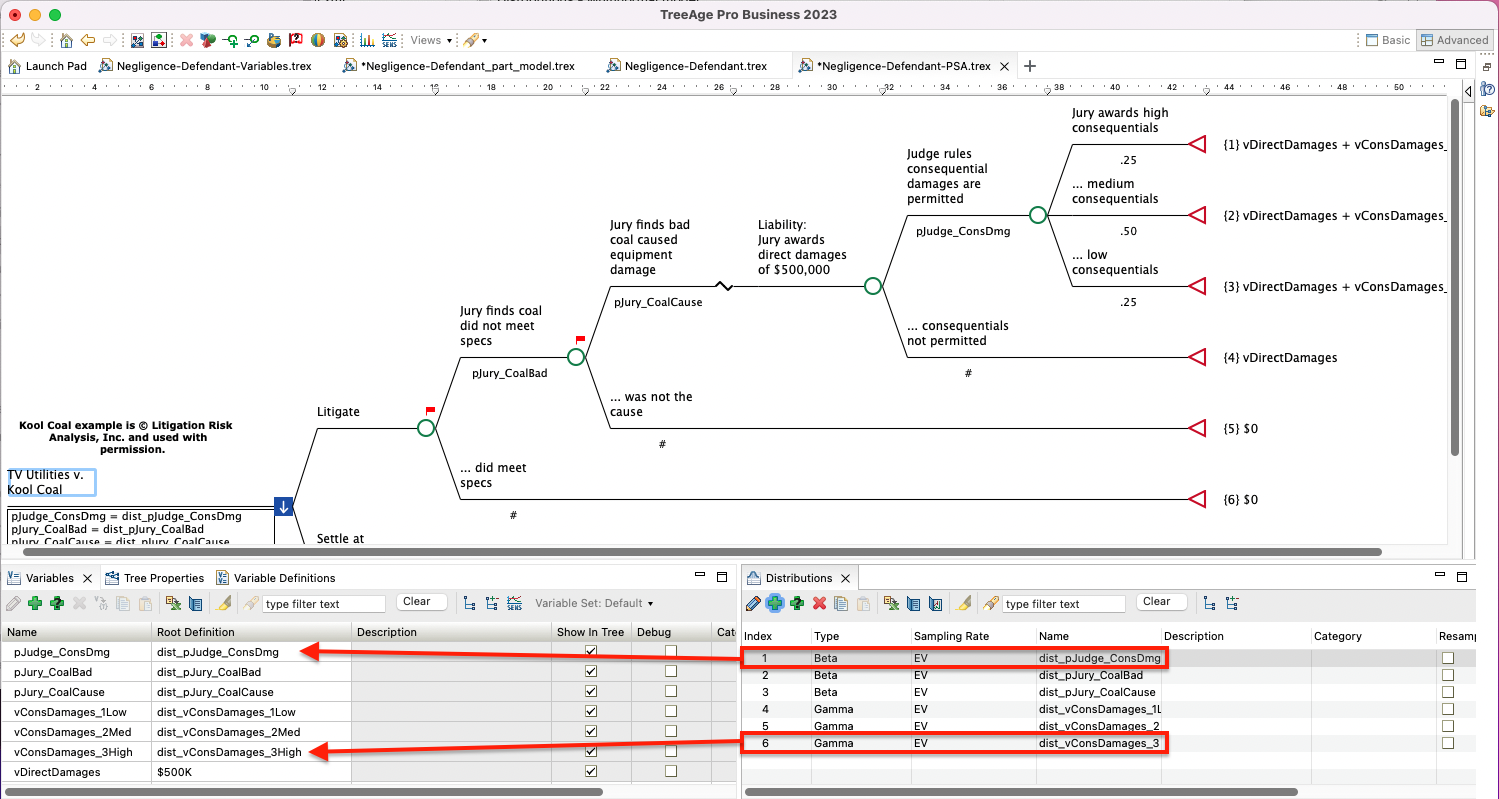25. Probabilistic Sensitivity Analysis
This chapter describes how to run Probabilistic Sensitivity Analysis (PSA) to study the impact of parameter uncertainty on models. Before running PSA, you need to use distributions for some of your inputs, so samples can be drawn from those distributions to represent parameter uncertainty. This chapter will cover how to include those distributions in your model.
Background
Probabilistic Sensitivity Analysis (PSA) studies the impact of parameter uncertainty on models. PSA is important because it helps us understand how confident we are in conclusions drawn from our model. In this chapter, we will examine running PSA on legal models.
When we run PSA, we calculate the model many times with different sets of inputs sampled from distributions that represent parameter uncertainty. We can then look at the set of results to understand the impact of that combined uncertainty. At a basic level, the higher percentage of calculations that confirm your base case, the more confidence you have in your conclusions.
Before running PSA, we must first add and reference parameter-level distributions for some of the model inputs. These distributions are then resampled for each calculation of the model.
PSA can be conducted on all model types supported by TreeAge Pro.
We will use two models in this section:
-
BreachOfContract-Variables.trex prior to adding distributions.
-
BreachOfContract-PSA.trex after adding the distributions.
The “final” model is ready for PSA.

PSA can be run on both cohort and microsimulation models. This chapter will focus on cohort models, but the results for simulation models are presented in the same format. PSA on simulation models will be mentioned in the section at the end of the microsimulation section, Probabilistic Sensitivity Analysis and Microsimulation.
